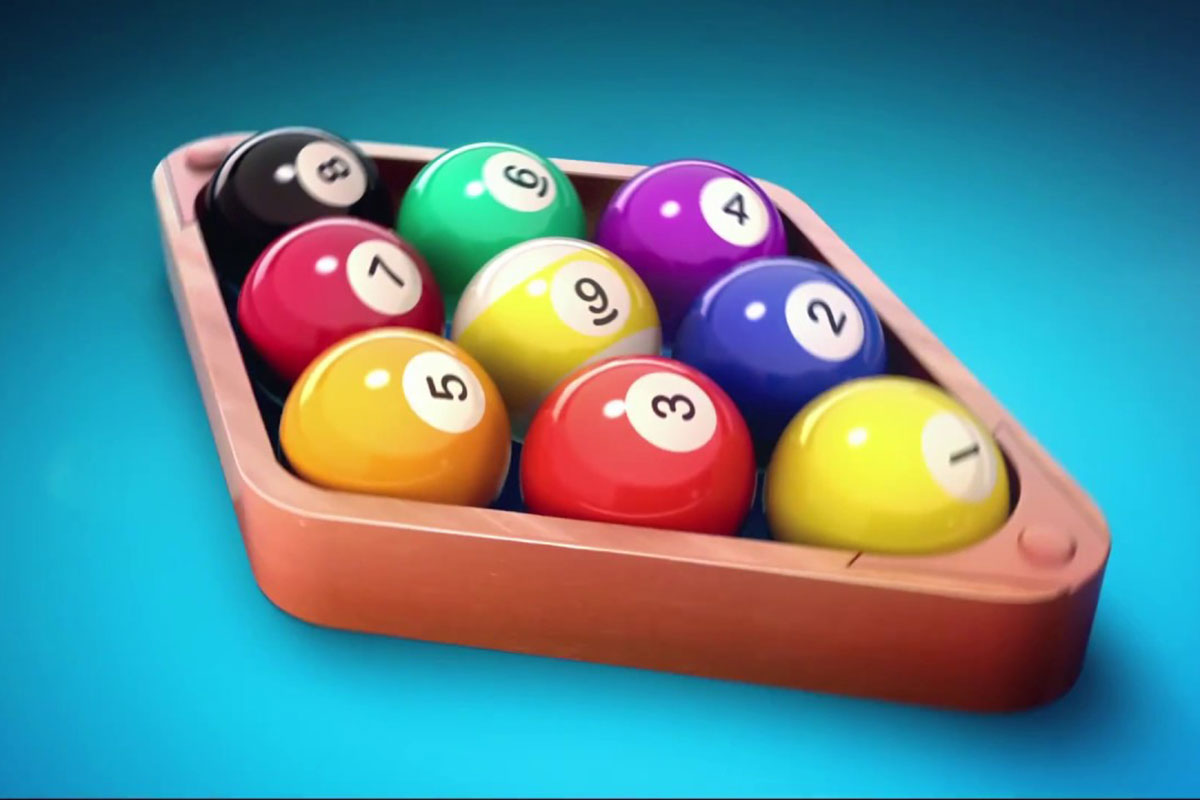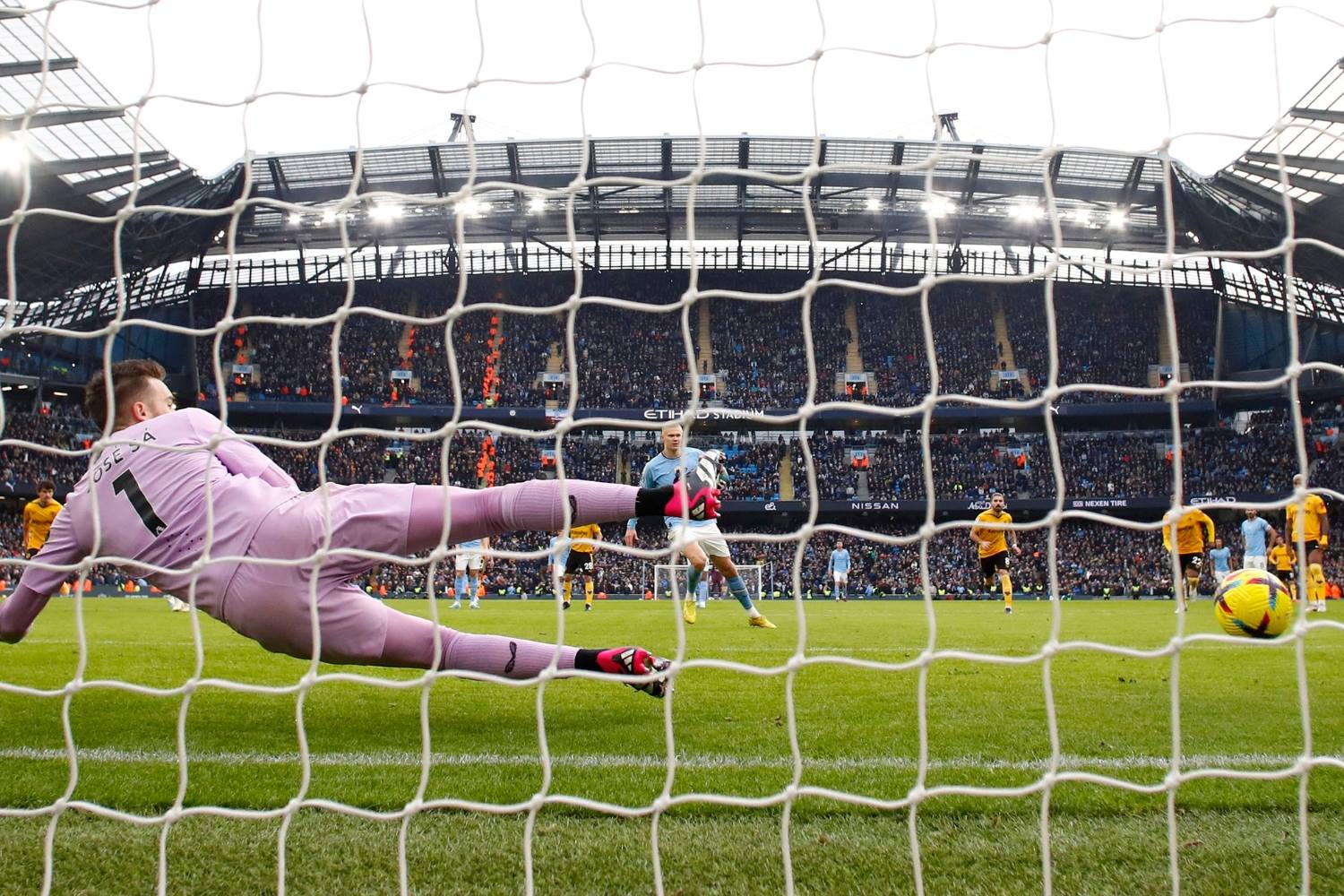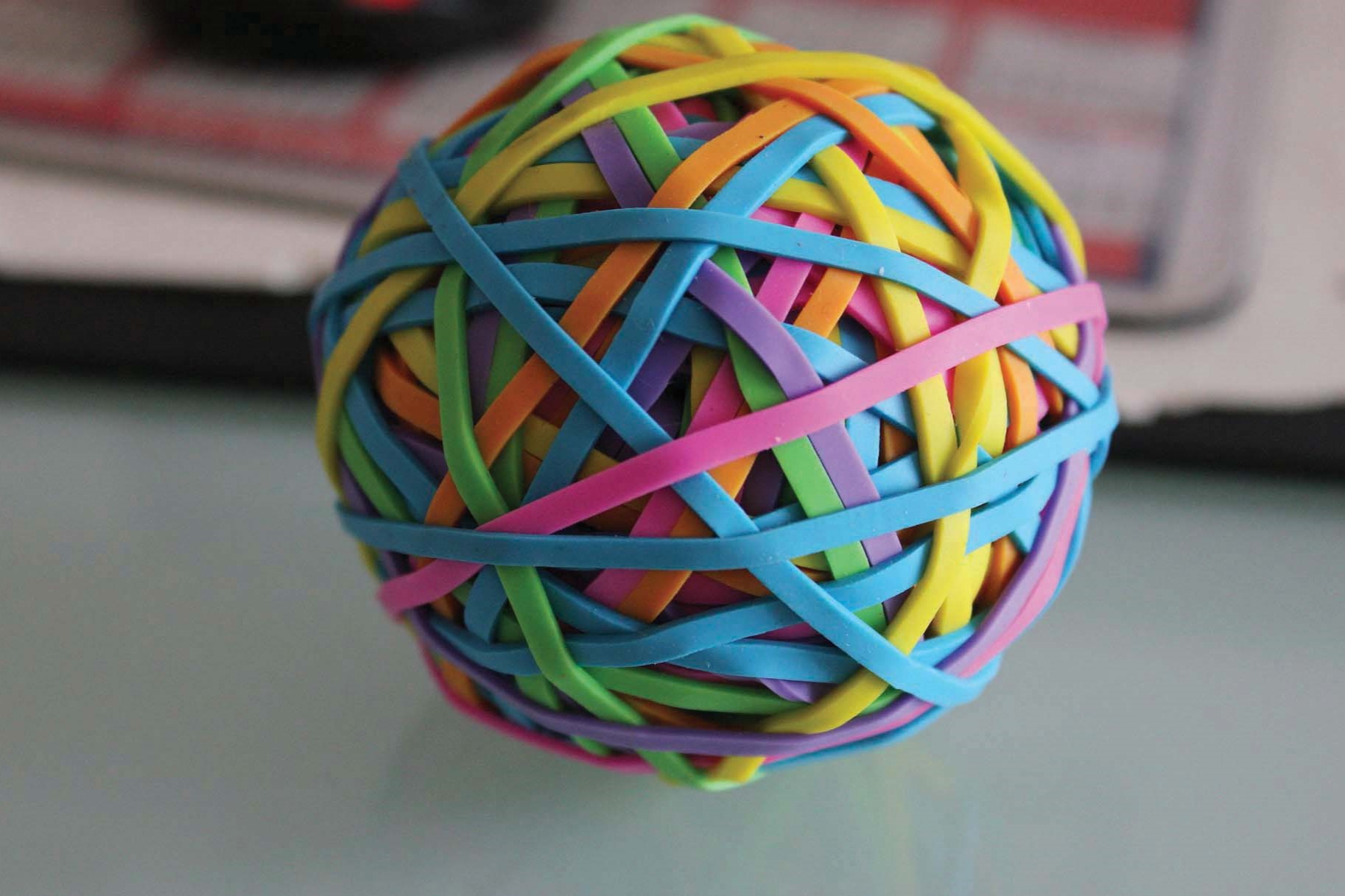Home>Arts and Culture>How To Draw A Soccer Ball


Arts and Culture
How To Draw A Soccer Ball
Published: February 27, 2024
Learn how to draw a realistic soccer ball with step-by-step instructions. Perfect for arts and culture enthusiasts looking to improve their drawing skills.
(Many of the links in this article redirect to a specific reviewed product. Your purchase of these products through affiliate links helps to generate commission for Noodls.com, at no extra cost. Learn more)
Table of Contents
Introduction
Drawing a soccer ball may seem like a daunting task, but with the right guidance and a bit of practice, you can create a realistic and impressive representation of this iconic sports symbol. Whether you're an aspiring artist, a soccer enthusiast, or simply looking for a fun and creative activity, mastering the art of drawing a soccer ball can be a rewarding experience.
In this step-by-step guide, we will explore the process of drawing a soccer ball from start to finish. By breaking down the intricate patterns and shapes into manageable steps, you'll gain a deeper understanding of the ball's structure and be able to replicate its distinctive appearance with confidence.
As we delve into the art of drawing a soccer ball, you'll discover the importance of precision and attention to detail. Each hexagon and pentagon on the ball contributes to its unique visual appeal, and by carefully replicating these elements, you'll bring your drawing to life.
Whether you're using traditional pencil and paper or digital drawing tools, this guide is designed to help you unleash your creativity and hone your artistic skills. So, grab your drawing materials and let's embark on this creative journey to capture the essence of soccer in a captivating and visually striking illustration.
Read more: How To Kick A Soccer Ball
Materials Needed
To embark on the artistic endeavor of drawing a soccer ball, you'll need a few essential materials to bring your vision to life. Here's a list of items that will aid you in creating a stunning representation of this iconic sports symbol:
-
Drawing Paper or Sketchbook: A high-quality drawing paper or sketchbook provides a smooth and sturdy surface for your artwork. Opt for a paper weight that suits your preferred drawing medium, whether it's pencil, pen, or digital tools.
-
Pencils: A set of drawing pencils, including varying lead grades, will allow you to achieve different levels of shading and precision in your artwork. Ranging from 2H for light sketching to 6B for darker tones, a diverse pencil set is essential for creating depth and dimension in your drawing.
-
Eraser: A reliable eraser is a crucial tool for refining your sketch and correcting any mistakes along the way. Look for a soft, non-abrasive eraser that won't damage the paper as you make adjustments to your drawing.
-
Ruler: While not mandatory, a ruler can be helpful for ensuring straight and evenly spaced lines when sketching the geometric patterns of the soccer ball. This tool can aid in maintaining the symmetry and accuracy of your drawing.
-
Reference Image: Having a reference image of a soccer ball, whether it's a physical ball or a digital representation, will guide you in capturing the intricate details and patterns that define the ball's appearance. This visual reference will serve as a valuable guide throughout the drawing process.
-
Optional: Digital Drawing Tablet and Software: If you prefer digital art, a drawing tablet and compatible software can offer a versatile platform for creating your soccer ball illustration. With the ability to undo and adjust with ease, digital tools can streamline the drawing process and provide a range of creative possibilities.
By gathering these materials, you'll be well-equipped to embark on the artistic journey of drawing a soccer ball with precision, creativity, and attention to detail. With the right tools at your disposal, you can immerse yourself in the art of capturing the essence of soccer through your unique and captivating illustration.
Step 1: Draw the Hexagons
The first step in drawing a soccer ball involves creating the iconic hexagonal pattern that adorns its surface. This distinctive geometric arrangement is a defining feature of the ball's design, and capturing its precise layout is essential for an accurate representation. To begin this step, follow these detailed instructions to bring the hexagons to life on your canvas.
-
Sketch the Circumference: Start by lightly sketching a circle to represent the outline of the soccer ball. This circular guide will serve as the foundation for positioning the hexagons and ensuring their symmetrical arrangement across the surface.
-
Divide the Circle: Using a ruler or freehand technique, divide the circumference of the circle into six equal sections. These divisions will form the basis for placing the hexagons in a balanced and uniform manner.
-
Position the Hexagons: Within each section, draw a regular hexagon, ensuring that its sides are parallel to the corresponding section of the circle. The hexagons should be evenly spaced and positioned to create a visually harmonious arrangement across the surface of the ball.
-
Refine the Shapes: Once the hexagons are sketched, refine their edges and angles to ensure a crisp and defined appearance. Pay close attention to the proportions and symmetry of each hexagon, as these details contribute to the overall realism of the soccer ball.
-
Add Dimension: To convey the three-dimensional nature of the ball, consider adding subtle shading to the hexagons. By incorporating light and shadow, you can create the illusion of depth and curvature, enhancing the visual impact of your drawing.
As you progress through this step, precision and attention to detail are paramount. By meticulously crafting the hexagonal pattern, you'll lay the foundation for an authentic and visually striking representation of the soccer ball. With the hexagons in place, you'll be ready to move on to the next step of adding the pentagonal elements that complete the distinctive appearance of the soccer ball.
Step 2: Add the Pentagons
With the hexagonal pattern meticulously sketched onto the canvas, the next crucial step in drawing a soccer ball is to incorporate the equally distinctive pentagonal elements. These pentagons, strategically positioned among the hexagons, contribute to the iconic visual appeal of the soccer ball. By following these detailed instructions, you'll bring depth and authenticity to your representation of this beloved sports symbol.
-
Identify the Placement: Begin by identifying the precise locations where the pentagons will be positioned within the hexagonal framework. Each pentagon is nestled among the surrounding hexagons, creating a balanced and symmetrical arrangement across the surface of the ball.
-
Sketch the Pentagons: With a keen eye for precision, carefully sketch the pentagons within the designated spaces. Pay close attention to the proportions and angles, ensuring that each pentagon fits seamlessly into the overall pattern while maintaining uniformity in size and shape.
-
Refine the Edges: Once the pentagons are in place, refine their edges to achieve crisp and well-defined shapes. Consistency in the size and symmetry of the pentagons is essential, as it contributes to the overall visual impact of the soccer ball's design.
-
Create Dimension: Similar to the approach taken with the hexagons, consider incorporating subtle shading to the pentagons to convey the ball's three-dimensional appearance. By skillfully applying shading and highlights, you can enhance the depth and curvature of the pentagons, further enriching the realism of your drawing.
-
Ensure Symmetry: Throughout this process, maintain a keen focus on symmetry and balance. The harmonious interplay between the hexagons and pentagons is integral to capturing the intricate and captivating nature of the soccer ball's design.
As you meticulously add the pentagonal elements to your drawing, you'll witness the transformation of the geometric framework into a visually compelling representation of the soccer ball. Each carefully placed pentagon contributes to the overall authenticity and allure of your artwork, bringing you one step closer to capturing the essence of this iconic sports symbol. With the hexagons and pentagons seamlessly integrated, your drawing will exude the dynamic energy and spirit associated with the world's most popular sport.
Step 3: Add Shading and Details
As you progress in the artistic journey of drawing a soccer ball, the addition of shading and intricate details plays a pivotal role in elevating the realism and visual impact of your artwork. This step involves infusing depth, dimension, and texture into the illustration, bringing the soccer ball to life with a captivating sense of authenticity.
Read more: How To Curve A Bowling Ball
Shading for Realism
To imbue the soccer ball with a sense of three-dimensionality, consider the light source and its interaction with the surface. Begin by identifying the primary light source, which will determine the areas of highlight and shadow. By delicately shading the regions where the panels curve away from the light, you can create the illusion of depth and curvature. Gradually build up the shading, using varying pencil pressures to achieve a smooth transition between light and dark areas. This meticulous approach adds a tactile quality to the drawing, enhancing the tactile appearance of the ball.
Texture and Surface Details
Capturing the texture of the soccer ball's surface is essential for conveying its tactile quality. Utilize subtle lines and stippling to emulate the textured panels, infusing the drawing with a sense of tactile realism. Pay attention to the subtle imperfections and irregularities present on the ball, as these details contribute to its authentic portrayal. By carefully observing the reference image, you can replicate the intricate surface details, such as scuff marks, creases, and subtle variations in panel texture, adding depth and character to your illustration.
Reflective Highlights
Incorporating reflective highlights further enhances the visual allure of the soccer ball. Identify the areas where light would prominently reflect off the surface, such as the glossy panels and raised seams. By delicately adding highlights with an eraser or a lighter pencil, you can simulate the reflective quality of the ball, infusing it with a captivating sheen. These highlights contribute to the overall luster and dynamism of the drawing, capturing the essence of the ball's polished appearance.
Attention to Detail
Throughout the shading process, meticulous attention to detail is paramount. Each panel should exhibit a consistent level of shading and highlight, contributing to the overall coherence and realism of the soccer ball. By carefully refining the shading and details, you'll bring a sense of vibrancy and authenticity to your artwork, capturing the essence of this iconic sports symbol with precision and artistry.
As you immerse yourself in the intricacies of shading and detailing, you'll witness the transformation of your drawing into a captivating representation of the soccer ball. The careful interplay of light, texture, and detail will imbue your artwork with a sense of dynamism and realism, showcasing your artistic prowess in capturing the essence of this beloved sports icon.
Read more: How To Rack Pool Balls
Step 4: Final Touches and Cleanup
As you approach the final stages of drawing a soccer ball, the focus shifts to refining the details, enhancing the overall visual impact, and ensuring a polished representation of this iconic sports symbol. This pivotal step encompasses a series of meticulous adjustments and enhancements that elevate your artwork to a captivating and authentic portrayal of the soccer ball.
Refinement of Lines and Edges
With the intricate patterns and shading in place, take the time to refine the lines and edges of the hexagons and pentagons. Emphasize the crispness and uniformity of the geometric shapes, ensuring that each panel exhibits a clean and well-defined outline. This attention to detail contributes to the overall precision and visual coherence of the soccer ball, elevating its aesthetic appeal.
Contrast and Definition
Evaluate the contrast within your drawing, ensuring that the interplay between light and shadow effectively accentuates the three-dimensional nature of the soccer ball. Fine-tune the shading to enhance the contrast, emphasizing the curvature and depth of the panels. By carefully adjusting the tonal values, you can achieve a heightened sense of realism and dynamism, infusing your artwork with a captivating visual allure.
Smoothing and Blending
Take a discerning eye to the transitions between light and dark areas, employing subtle blending techniques to achieve a seamless and polished appearance. Smooth out any abrupt transitions, ensuring that the shading flows naturally across the surface of the ball. This meticulous approach enhances the tactile quality of the drawing, creating a sense of smoothness and continuity that mirrors the polished texture of the soccer ball.
Read more: How To Set Up Pool Balls
Erasing and Clean-Up
As you finalize the details, utilize an eraser to gently remove any stray marks or smudges, refining the overall cleanliness of the drawing. Pay close attention to the edges and intersections of the panels, ensuring that they exhibit a pristine and well-defined appearance. This process of erasing and clean-up adds a professional finish to your artwork, underscoring your dedication to precision and excellence.
Final Assessment
Step back and assess your drawing as a whole, considering the overall composition, balance, and visual impact. Take this opportunity to make any final adjustments or refinements, ensuring that every aspect of the soccer ball is meticulously crafted and visually compelling. By approaching the drawing with a discerning eye and a commitment to excellence, you'll achieve a stunning and authentic representation of this beloved sports symbol.
As you navigate the final touches and cleanup, you'll witness the transformation of your initial sketch into a captivating and visually striking illustration of the soccer ball. Each meticulous adjustment and enhancement contributes to the overall authenticity and allure of your artwork, showcasing your artistic prowess and dedication to capturing the essence of this iconic sports icon.
Conclusion
In conclusion, the art of drawing a soccer ball is a captivating and rewarding endeavor that allows artists to capture the essence of this iconic sports symbol with precision and creativity. Throughout the step-by-step process, we embarked on a journey to replicate the intricate patterns and geometric elements that define the soccer ball's distinctive appearance. From sketching the hexagons and pentagons to infusing depth and detail through shading and refinement, each step contributed to the creation of a visually compelling and authentic representation.
As we navigated through the meticulous process of drawing a soccer ball, the importance of precision, attention to detail, and a discerning eye for symmetry became evident. The careful placement of hexagons and pentagons, the nuanced shading to convey three-dimensionality, and the refinement of lines and edges all played a crucial role in bringing the soccer ball to life on the canvas. By infusing the artwork with texture, reflective highlights, and a commitment to excellence in the final touches, we achieved a captivating portrayal of this beloved sports icon.
Drawing a soccer ball transcends the act of replicating a geometric pattern; it embodies the spirit of creativity, precision, and dedication to capturing the essence of a universally recognized symbol. Whether approached with traditional drawing tools or digital mediums, the art of drawing a soccer ball offers a platform for artists to showcase their technical skill and artistic vision while paying homage to the dynamic world of sports.
As artists, embracing the challenge of drawing a soccer ball provides an opportunity to hone our craft, expand our understanding of geometric patterns, and immerse ourselves in the artistry of sports symbolism. The resulting illustration serves as a testament to our ability to translate complex forms into visually striking representations, resonating with soccer enthusiasts and art aficionados alike.
In essence, the journey of drawing a soccer ball is a testament to the fusion of art and sports, where precision meets creativity, and meticulous detail converges with visual impact. Through this creative endeavor, we celebrate the universal appeal of soccer while showcasing the artistry and technical prowess inherent in the act of drawing. So, whether you're an aspiring artist, a soccer aficionado, or simply seeking a captivating artistic challenge, the art of drawing a soccer ball invites you to embark on a creative odyssey that captures the spirit and energy of the beautiful game.












